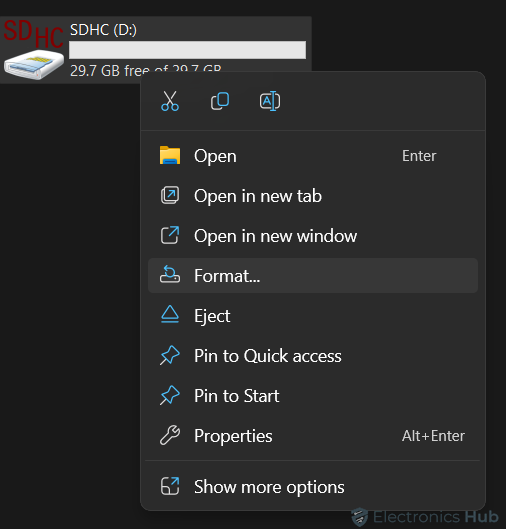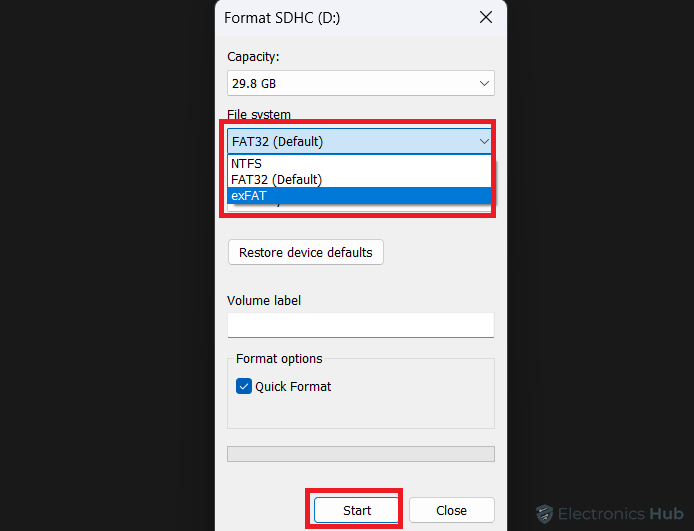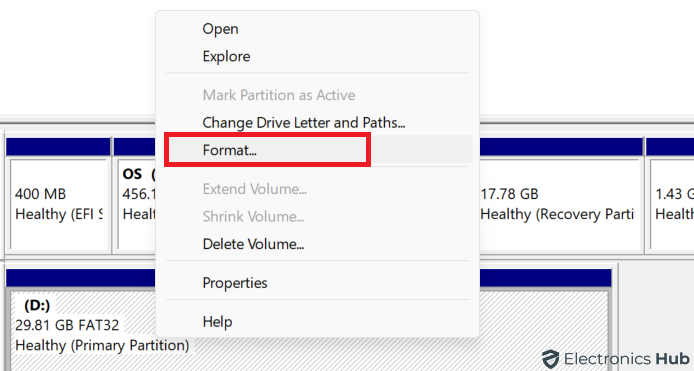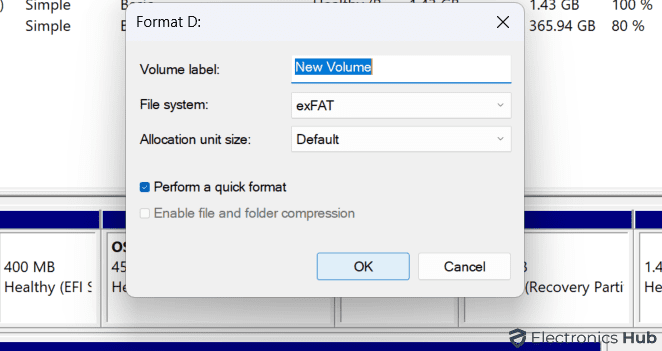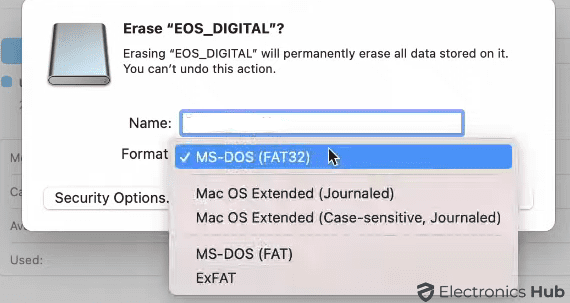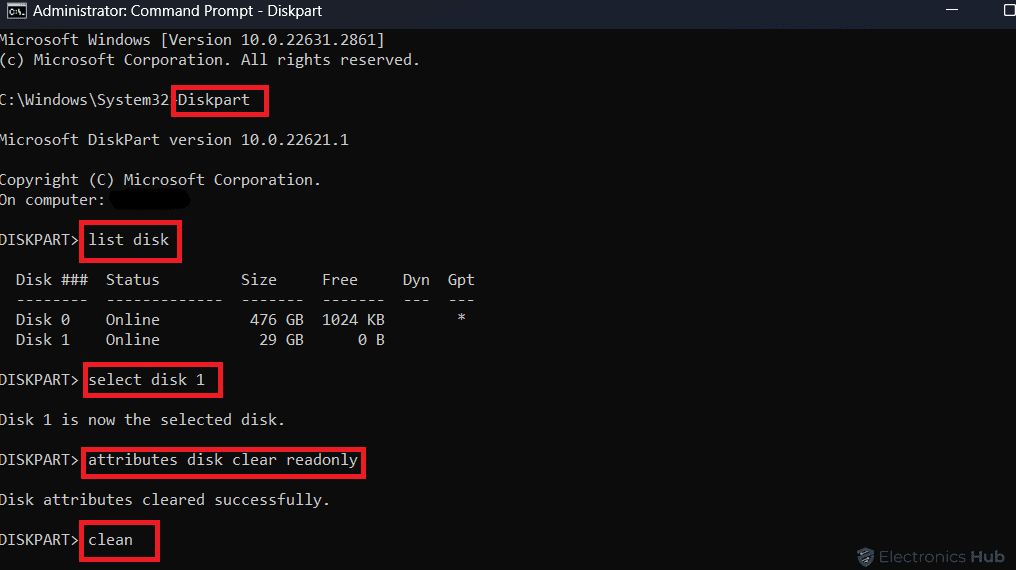Micro SD cards are indispensable memory solutions, often found in smartphones, cameras, and GPS devices, offering additional storage space for your digital world. As these cards accompany us through countless data transfers and usage cycles, the need to format them becomes inevitable for maintenance and optimization. While most devices offer built-in commands for formatting, the process can also be executed through Windows or Mac computers. Understanding how to format a micro SD card and recognizing the reasons behind this essential task is pivotal. Join us as we navigate through the nuances of formatting, uncovering the ‘whys’ and ‘hows’ to ensure your micro SD card stays at its peak performance.
Outline
ToggleReasons For Formatting SD Cards
Since formatting an SD card is definitely much better than deleting files, you may also want to learn more about the benefits for the same. Hence, here the top 4 reasons for formatting SD cards:
- Using a New SD Card: In case you have bought a new SD card for your camera, then you should format it right after opening it. This will create a DCIM structure inside it according to the camera that you are using.
- Preventing Card Corruption: As mentioned earlier, deleting a large number of video files from your SD card can possibly corrupt it. So, you should format your camera’s SD card from time to time to prevent card corruption.
- Freeing Up Space for Photos & Videos: If you are going for a long photo or video shoot, then you will need to have a lot of space on your SD card for the same. Hence, it is a great idea to format your SD card to free up space to the total capacity of your SD card.
- Switching SD Cards between Cameras: Different cameras out there will use different types of DCIM structures. As a result, if you wish to plan to use the same SD card between two or more cameras, then the DCIM structure will need to be recreated every time you switch the camera. Thus, make sure to format your SD card after inserting your SD card in a different camera.
How to Format an SD/ Micro SD Card?
Understanding the step-by-step process of formatting an SD card is essential for maintaining its optimal functionality. Whether you’re on a Windows or Mac system, the following detailed instructions will guide you through the seamless formatting of your SD card, ensuring its performance and compatibility.
Format SD Card on Windows
In case you use a Windows PC to backup and edit your photos, you may want to format your SD card right after transferring all photos and videos from it. Thankfully, Windows allows you to format SD cards in multiple ways while offering various handy options. But if you want to use the easiest method, you can easily and quickly format SD cards on Windows as described here:
a. Format SD Card on Windows via File Explorer:
- Insert your Micro SD card into the appropriate slot on your Windows laptop or use an SD card reader connected to your desktop’s USB port.
- Open File Explorer on your Windows system. Your SD card will appear as one of the available drives under “This PC” or “My Computer.“
- Right-click on the drive corresponding to your SD card and select “Format” from the context menu.
- A formatting window will appear, providing options for formatting. Choose the desired file system (FAT32 for SD cards under 32GB, exFAT for over 32GB), assign a label to the SD card, and ensure the allocation unit size meets your preferences.
- Click on the “Start” button to initiate the formatting process. An additional confirmation warning may appear indicating that the data on the drive will be erased. Proceed by clicking “OK” to commence formatting.
b. Format SD Card on Windows via Disk Management:
While using File Explorer to format SD cards should work without any issues, some of you may want an alternative for the same. In that case, you can also try formatting SD cards on Windows using Disk Management as shown here:
- Connect your Micro SD card to your Windows computer through the card slot or an SD card reader.
- Right-click on the Start menu and select “Disk Management” from the provided list of options.
- In the Disk Management window, locate your SD card from the list of disks displayed. Right-click on the SD card and choose the “Format” option.
- Similar to the File Explorer method, select the preferred file system, assign a drive label, and set the allocation unit size based on your requirements.
- Once you’ve adjusted the settings, click “OK” to confirm and save the chosen formatting configurations.
Both methods offer a user-friendly interface to format your SD card efficiently. Whether using File Explorer’s intuitive interface or the Disk Management tool’s detailed disk management options, Windows provides multiple avenues for formatting your Micro SD card to suit your needs.
Format SD Card on MacOS
In case you are a professional photographer or videographer, it is quite likely that you may use a Mac instead of Windows PCs to edit your photos and videos. If that is the case, then the steps to format your SD card will be entirely different. To be more specific, you will need to follow these instructions explained down below:
- Insert your Micro SD card into the appropriate slot on your Mac computer using a card reader or the SD card slot.
- Open Disk Utility. You can find it by navigating to Applications > Utilities, or use Spotlight by pressing Command + Spacebar and typing “Disk Utility.“
- In Disk Utility, locate and select your SD card from the list of available drives on the left-hand side of the window.
- Click on the “Erase” button at the top of the Disk Utility window.
- A new window will appear, providing options for erasing and formatting. Choose the desired file system (select MS-DOS or FAT32 for SD cards under 32 GB and exFAT for SD cards over 32 GB of capacity), assign a name to the SD card.
- Once you’ve configured the settings, click on the “Erase” button. A confirmation prompt will appear, informing you that erasing the disk will permanently remove all data. Proceed by clicking “Erase” to start the formatting process.
- Once the formatting process completes, Disk Utility will display a message confirming the successful formatting of your Micro SD card.
MacOS’s Disk Utility simplifies the formatting process, allowing users to efficiently format SD cards for various uses and ensure compatibility across different devices within the Apple ecosystem.
Format SD Card on Android
Formatting an SD card on an Android device is a straightforward process that allows users to optimize storage, troubleshoot issues, or prepare the card for a different device. Android provides a native tool within the device settings to facilitate the formatting process seamlessly.
- Open the “Settings” app on your Android device. The icon resembles a gear and is usually found in the app drawer or on the home screen.
- Scroll down and select the “Storage” option. This section provides an overview of your device’s storage usage.
- If your SD card is inserted, you should see an option related to the SD card in the Storage section. Tap on it to access additional settings.
- Look for an option similar to “Format” or “Format SD card.” This may vary slightly depending on the device and Android version. Tap on this option to proceed.
- A confirmation prompt will appear, informing you that formatting will erase all data on the SD card. Confirm your decision to start the formatting process.
- The device will take a few moments to complete the formatting process. Once done, you’ll receive a confirmation message.
Formatting the SD card on Android through the device settings provides a user-friendly and efficient way to manage your storage and maintain optimal performance.
How to Format Write-Protected SD Cards on Windows?
Sometimes, when attempting to format an SD card, you may encounter an error indicating that it is write-protected or read-only. This protection prevents any modifications or formatting of the card. However, there are steps you can take to remove this write-protection and proceed with formatting the SD card on a Windows system.
Most SD cards have a small tab on the edge that controls write-protection. Ensure it is in the opposite position (up or down) if your card is write-protected. If there is no tab or the issue persists, follow the steps below.
- Press the Windows key, type “Command Prompt,” right-click on it, and select “Run as administrator.
- In the Command Prompt window, type Diskpart and press Enter.
- Type list disk and press Enter. Identify the disk number corresponding to the size of your SD card.
- Type select disk # (replace # with the disk number for your SD card) and press Enter.
- Type attributes disk clear readonly and press Enter.
- Type clean and press Enter. This will remove all partitions and data from the SD card.
- Once the process is complete, type exit and press Enter.
- Close the Command Prompt and proceed to format the SD card using File Explorer, following the steps outlined in the previous section for formatting on Windows.
Choosing The Best File System For High Capacity SD Cards
As mentioned earlier, whenever you format an SD card using Windows or MacOS, it gives you the option to select a file system of your choice. In case you are new to SD cards and file systems, you may get confused while picking the same. Therefore, make sure to consider the following details while picking the best file system for high capacity SD cards:
- FAT32: Despite being an older file system FAT32 or MS DOS FAT32 is still a great option for older SD cards. If you are using an SD or SDHC SD card with your camera, then they will only support the FAT32 file system. As for the specifications of the FAT32 file system, it supports a maximum file size of up to 4 GB and a maximum storage drive capacity of up to 32 GB.
- exFAT: Coming to more recent SD card options out there like SDXC, they offer drive capacities much higher than 32 GB. As a result, you should use the newer exFAT file system with them. With exFAT, you get a theoretical maximum file size limit of up to 16 EB and maximum drive capacity limit of up to 128 PB. In short, you should use the exFAT file system for all modern SD cards.
- NTFS: While NTFS offers the same storage capacity and file size support as exFAT, it is unfortunately not supported by most cameras. Thus, you should avoid using the NTFS file system if you wish to use your SD card with a camera.
Also Check: How to Format an SSD (Solid State Drive)?
Format SD Cards – FAQs
Ans: The ideal file system (FAT32, exFAT, etc.) depends on the device compatibility and storage capacity. For compatibility across different platforms (Windows, MacOS, etc.), exFAT is often preferred for larger capacity cards.
Ans: Try checking for a physical write-protection switch on the card. If that’s not the issue, you can use diskpart commands in Command Prompt (Windows) to clear the write-protection attribute. Detailed steps are outlined in this guide.
Ans: Ensure the SD card is properly connected, try using a different card reader or slot, and check for any physical damage on the card. If issues persist, consult the device’s user manual or seek technical support.
Ans: The file system choice depends on the device compatibility and the card’s capacity. FAT32 is suitable for smaller capacities (<32GB), while exFAT is preferable for larger capacities (>32GB) and broader compatibility across devices.
Conclusion
Formatting your Micro SD card is crucial for maintaining optimal performance and preventing corruption. Whether you use Windows or Mac, this guide provides detailed instructions on how to format securely and choose the best file system for your high-capacity cards. Remember to back up your data before formatting, as the process erases everything permanently. With proper care and formatting, your Micro SD card will keep your digital world vibrant and accessible for years to come.

